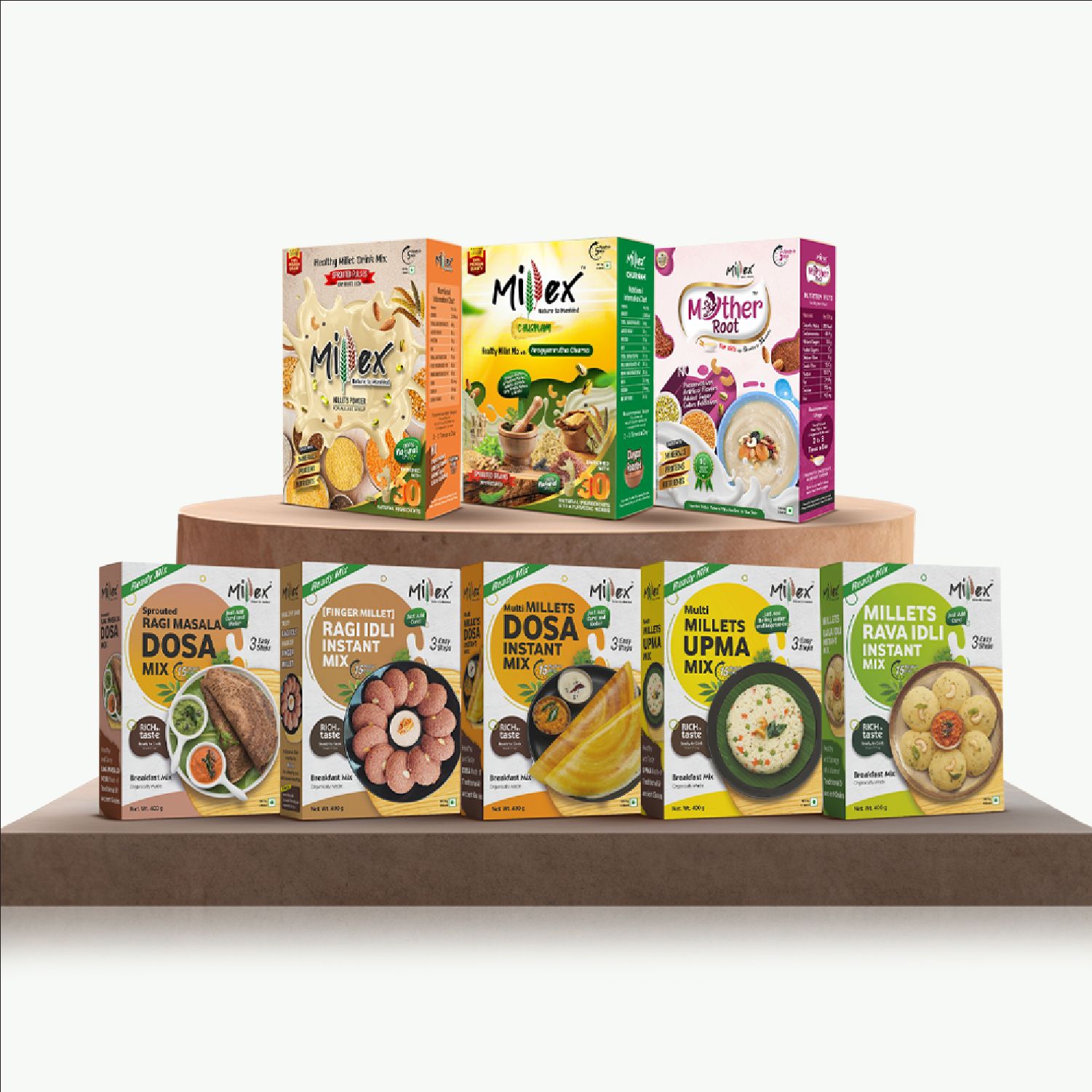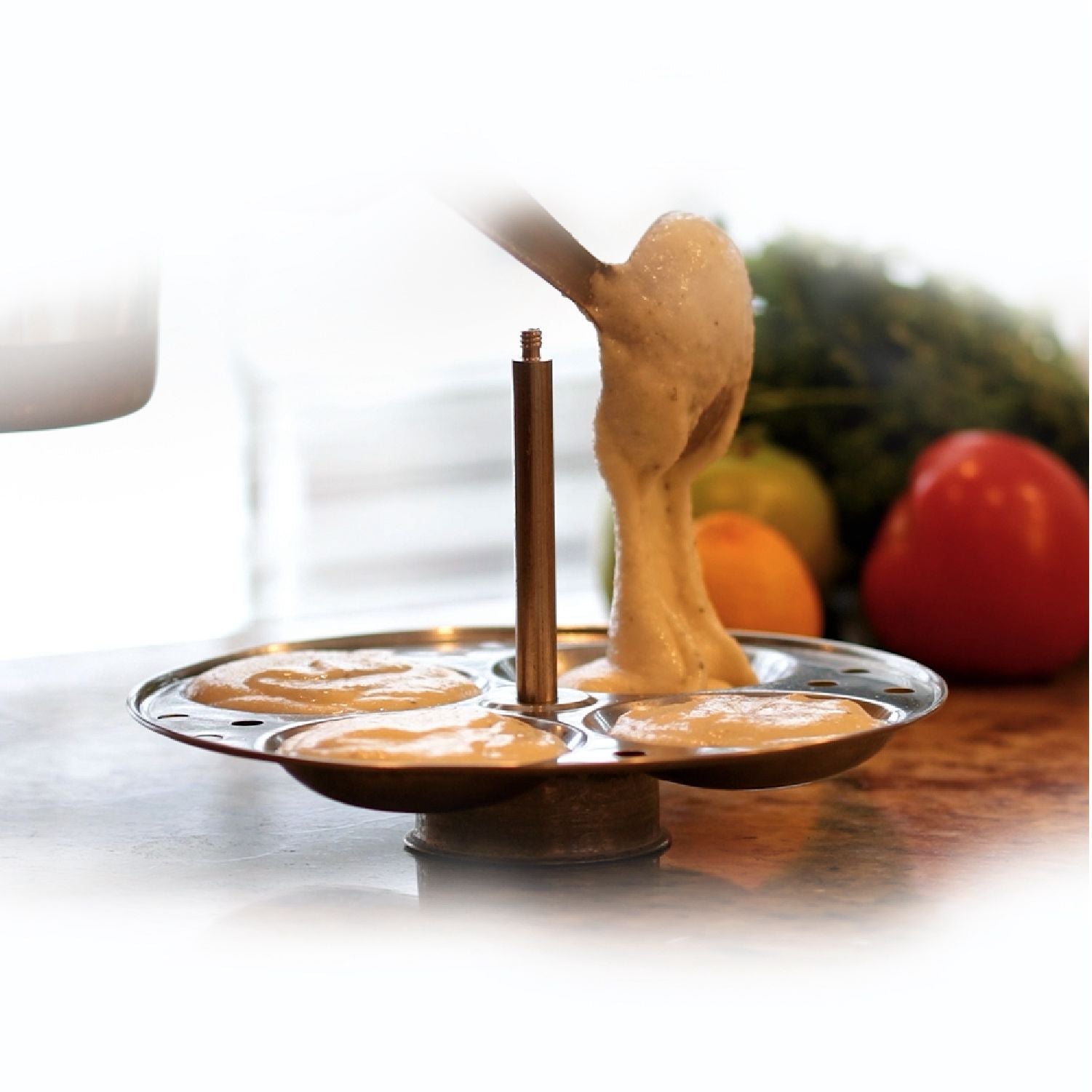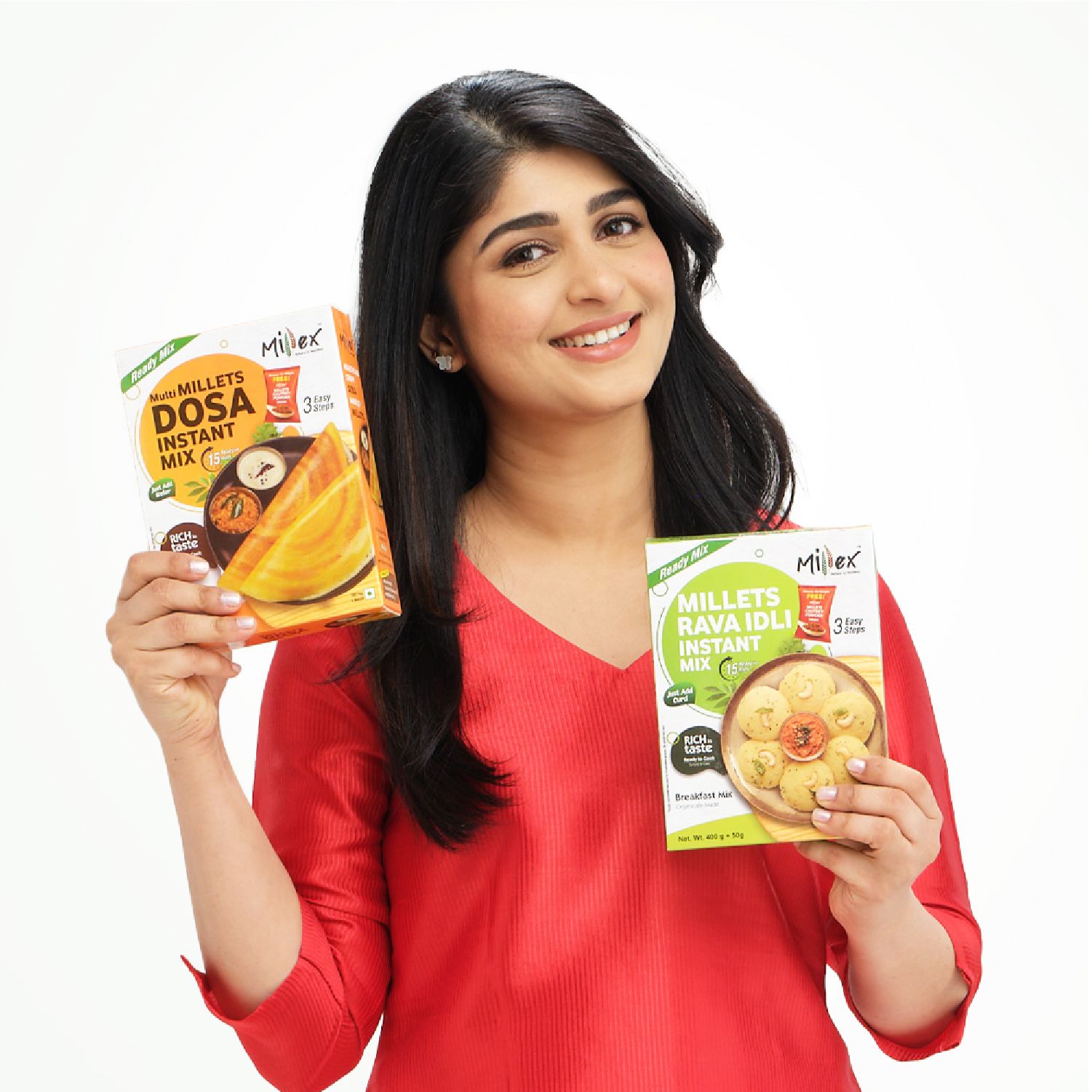If your cupboard or pantry filled with healthy staples like brown rice, quinoa, and oats, that's fantastic! However, if you haven't explored millet yet, a lesser-known grain garnering attention for its nutritional and environmental advantages, now is an ideal moment to get some from your local market or online and give it a taste.
Adding millet to your daily diet will improve your overall well-being, especially since it manages blood sugar levels. Yes, you heard it right! Including millet in your daily meals can make a significant difference. With its low glycemic index and high fiber content, millet is an excellent choice for individuals seeking to regulate blood sugar levels effectively.
Are you one of those who is struggling to control your diabetes? If so, it is the right time to get a millet health mix from Millex. Millex millet health mix is packed with a blend of nutritious millets and beneficial Ayurvedic herbs.
Diabetes and Millets
Diabetes is a chronic health issue where the body struggles to regulate blood sugar levels properly. To manage this condition, making dietary choices that prevent sudden spikes in blood glucose is crucial.
A diabetes-friendly diet should prioritize foods with a low glycemic index, which measures how quickly a food raises blood sugar levels.
Low GI foods, such as millet, help to maintain stable blood sugar levels and avoid potential complications associated with uncontrolled diabetes.
Why Are Millets Good For Diabetic Individuals?
Millets offer a multifaceted approach to diabetes control due to their unique nutritional composition. With a low glycemic index, they regulate blood sugar levels by preventing sudden spikes.
High fiber content promotes satiety, stabilizing blood sugar and reducing the risk of overeating. Additionally, their high protein content enhances insulin sensitivity, which aids in sugar conversion to energy.
Moreover, their anti-inflammatory further support diabetes management by reducing inflammation. Incorporating millet into the diet provides a holistic approach to diabetes control, promoting overall wellbeing.
Factors To Consider Before Choosing Millets For Diabetes
If you are looking to add millet to your daily diet, you can always choose your favorite one. But think when you have some disorder in your body, going throughout research about the millets and getting the good one will make sense. However, when it comes to managing diabetes, specific factors should be considered before incorporating millet into your diet plan. Let's see the important factors before choosing the millet drink for diabetic people:
- Glycemic Index
If you are a diabetic individual, then you will definitely come across the word "Glycemic Index." The glycemic index categorizes carbohydrates based on their impact on blood sugar levels, with lower GI foods being digested more slowly, which results in a gradual increase in blood glucose level.
Conversely, foods with a higher GI are digested quickly, leading to a rapid spike in blood sugar levels. Planning to add millet to your daily diet? If so, you need to know that several millet varieties boast low to medium GI values.
So, if you are a diabetic person, then choosing millets with a low GI is crucial to prevent spikes in blood sugar. Millets like pearl millet, foxtail millet, and little millet have a low GI, which makes them ideal choices for people with diabetes.
- Fiber Content
The next thing you need to consider when choosing millet for diabetes is Fiber. Generally, food that is rich in fiber will keep your digestive system healthy.
For diabetic patients, fiber helps by slowing down the absorption of sugar and improving blood sugar control. Additionally, fiber promotes feelings of fullness, potentially aiding in weight management, another important factor in diabetes management.
Millets like finger millet and barnyard millet are rich in fiber. It makes them excellent options for diabetics looking to regulate their blood sugar levels.
- Nutritional Profile
Yes! It is essential to check the nutritional value before buying the pack of millet. Do you know that each millet offers a different nutritional value? Of course, the nutritional profile of various millets offers a diverse array of nutrients.
For example, pearl millet is familiar for its iron and magnesium content. These nutrients are essential for blood sugar regulation and overall health.
On the other hand, foxtail millet shines as a valuable protein source, which helps in muscle maintenance and blood sugar management. By comprehending the distinct nutritional compositions of different millet varieties, individuals can make informed dietary choices.
- Cooking Versatility
Here comes our favorite part! Trying out a new healthy dishes will satisfy your mind and hunger. Along with other food grains, you can try new diet varieties with millets. Millets can be used in various dishes, from porridges and salads to pilafs and baked goods. Choosing a millet that fits well with your cooking style is essential.
Hey, wait!! Do you have time to try out new dishes with millets? Are you a hectic person who is looking to balance both time and blood glucose levels? If so, then get the Millex millet health mix, which will be a game changer in your life.
We offer the best mix of Millets for blood sugar control by incorporating all the essential millets. Seriously, you can cook different varieties of dishes with their health mix. Give it a try!!
What millets work best for diabetic people?
Choosing the right type of millet can significantly impact blood sugar levels and overall health for individuals with diabetes. Here's a breakdown of various millets and their benefits:
- Foxtail Millet
Research suggests that incorporating foxtail millet into the diet of individuals with type 2 diabetes can significantly improve blood sugar, insulin, cholesterol, and triglyceride levels.
One study even found that substituting rice with foxtail millet for breakfast decreased post-meal blood sugar levels. This indicates that foxtail millet may be a beneficial addition to managing diabetes effectively.
- Kodo Millet
Kodo millet, which has long been valued in India for its therapeutic properties, has emerged as an effective partner in the fight against diabetes.
Kodo millet is well-known for its anti-diabetic effects, making it especially good for people who want to lose weight as part of their diabetes treatment plan.
Studies confirm that Kodo millet has five unique anti-diabetic chemicals that work together to maintain appropriate blood sugar levels, cementing its role as a diabetes-fighting superfood.
- Finger Millet
Unlike foods that cause abrupt spikes in blood sugar levels, finger millet contributes to a gradual and steady increase.
Its high fiber content and low glycemic index make it an ideal choice for stabilizing blood sugar, reducing cholesterol levels, and aiding in weight loss, all of which are beneficial for individuals with diabetes.
- Jowar Millet
Jowar millet emerges as an excellent choice for people with diabetes and obesity. Individuals who replace wheat rotis with jowar alternatives might enjoy a lower glycemic index option since jowar has a GI of 62 compared to wheat's 72.
Jowar is high in antioxidants, iron, protein, fiber, and vitamin B, in addition to its low glycemic index.
These nutrients lower inflammation and counteract the cellular damage caused by diabetes. Jowar can effectively promote weight loss attempts in persons dealing with obesity and diabetes.
- Browntop Millet
Browntop millet stands out among millets as a superfood that goes beyond nutrition to become a nutraceutical.
It contains magnesium, potassium, fiber, calcium, iron, and other minerals, providing a complete nutritional package. Regular consumption of this millet helps to prevent the progression of type 2 diabetes.
Furthermore, it helps to detoxify the body, maintain appropriate blood pressure levels, and reduce the incidence of colon cancer, arthritis, and stomach ulcers.
- Barnyard Millet
Barnyard millet has been shown to improve glucose sensitivity in diabetics and control blood sugar.
Additionally, it is gluten-free, making it suitable for individuals with gluten intolerance or those following an allergen-free diet.
By incorporating barnyard millet into their meals, individuals with diabetes can enjoy a nutritious option that supports their dietary needs while managing blood sugar levels effectively.
Final Words
Millets stand out as a source of hope in the face of rising diabetes rates worldwide. These ancient grains have a potent combination of low glycemic index, high fiber, and essential minerals, making them ideal companions in controlling the blood sugar level and other chronic diseases. By incorporating Millex millet health mix into your diet, you can efficiently be satisfied with Millet grains and diabetes prevention. So, what are you still looking for? Explore the health mix product from Millex, try new recipes, and enjoy the numerous health benefits it offers. Take control of your health today with Millex millet health mix, and start your journey to a better, happier self.






